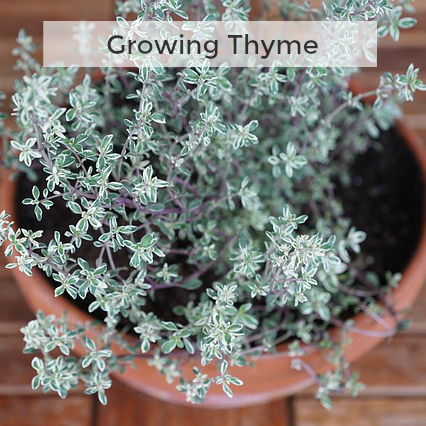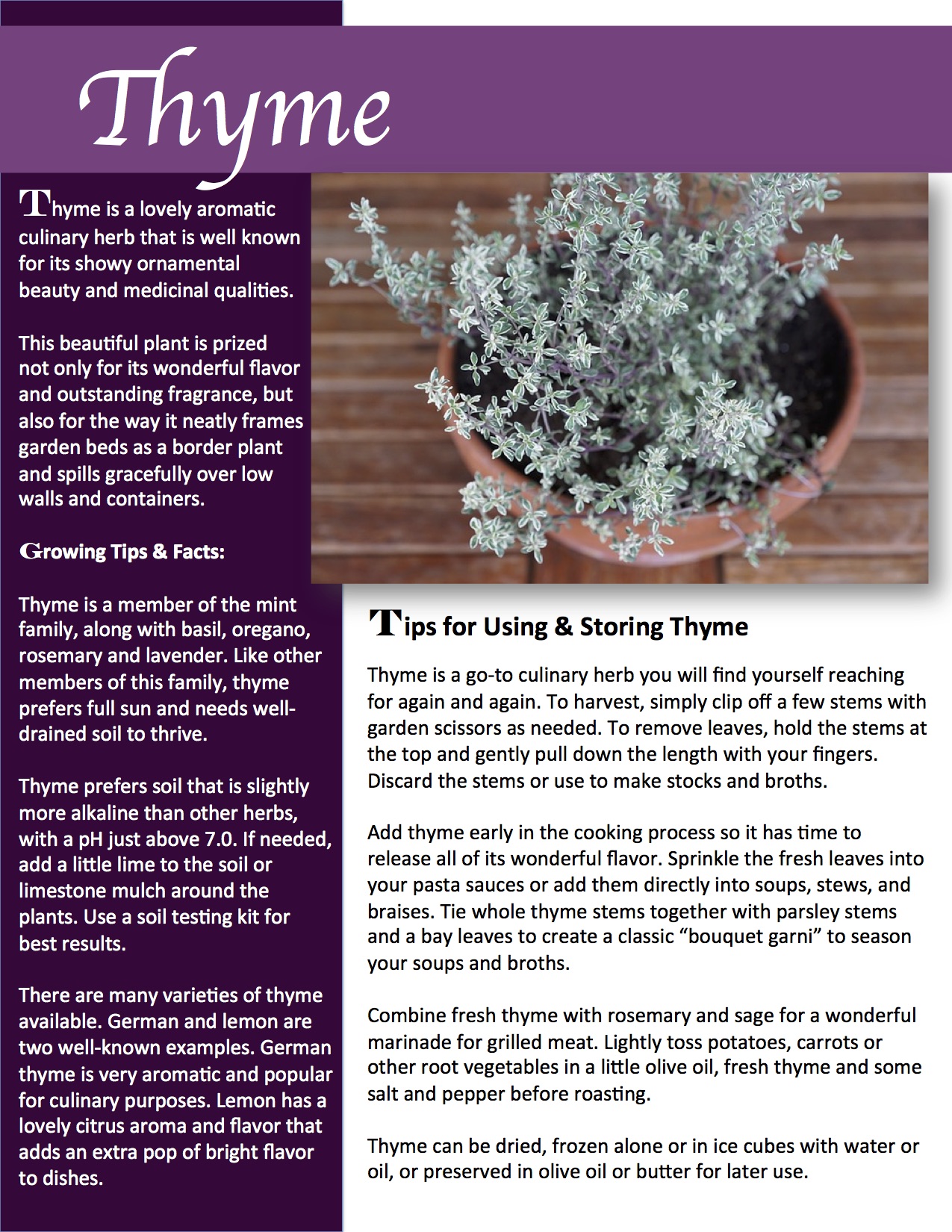
Thyme is a lovely aromatic culinary herb that is well known for its showy ornamental beauty and medicinal qualities.
This beautiful plant is prized not only for its wonderful flavour and outstanding fragrance, but also for the way it neatly frames garden beds as a border plant and spills gracefully over low walls and containers.
Growing tips and facts:
Thyme is a member of the mint family, along with basil, oregano, rosemary and lavender. Like other members of this family, thyme prefers full sun and needs well-drained soil to thrive.
Thyme prefers soil that is slightly more alkaline than other herbs, with a pH just above 7.0. If needed, add a little lime to the soil or limestone mulch around the plants. Use a soil testing kit for best results.
There are many varieties of thyme available. German thyme and lemon thyme are two well-known examples. German thyme is very aromatic and popular for culinary purposes. Lemon has a lovely citrus aroma and flavour that adds an extra pop of bright flavour to dishes.
Tips for using and preserving thyme
Thyme is a go-to culinary herb you will find yourself reaching for again and again. To harvest, simply clip off a few stems with garden scissors as needed. To remove leaves, hold the stems at the top and gently pull down the length with your fingers. Discard the stems or use to make stocks and broths.
Add thyme early in the cooking process so it has time to release all of its wonderful flavor. Sprinkle the fresh leaves into your pasta sauces or add them directly into soups, stews, and braises. Tie whole thyme stems together with parsley stems and a bay leaves to create a classic “bouquet garni” to season your soups and broths.
Combine fresh thyme with rosemary and sage for a wonderful marinade for grilled meat. Lightly toss potatoes, carrots or other root vegetables in a little olive oil, fresh thyme and some salt and pepper before roasting.
Thyme can be dried, frozen alone or in ice cubes with water or oil, or preserved in olive oil or butter for later use.


[…] is a member of the mint family, along with basil, oregano, thyme and many others. Its ideal growing environment is similar to other members of this botanical […]